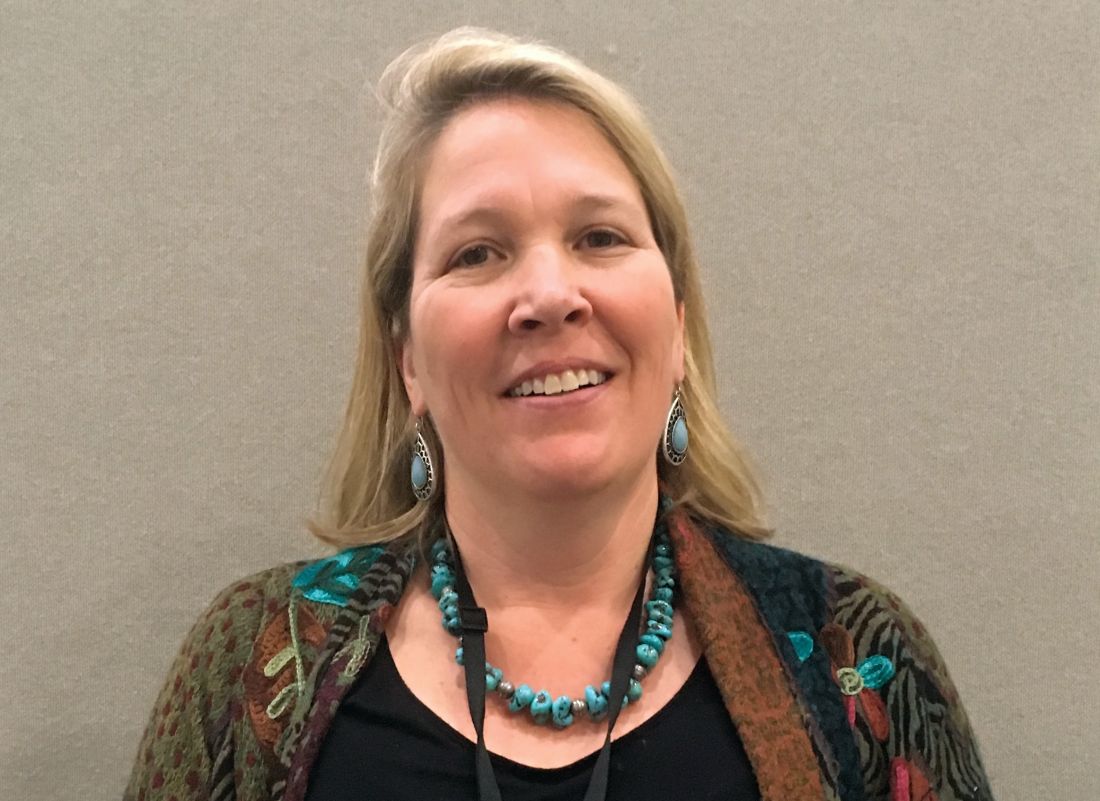User login
SAN FRANCISCO – International adoptions today almost exclusively involve children with special needs, and domestic adoptions are far more likely to involve children exposed prenatally to marijuana, opiates, or another drug, Lisa Prock, MD, MPH, found in a study.
“Pediatric health care providers reviewing referrals for adoption should be knowledgeable about the changing demographics of this population and the long-term implications of prenatal substance exposure, given increasing opiate and marijuana use nationally,” said Dr. Prock of Boston Children’s Hospital.
During the initial flood of international adoptions in the 1990s, families sought preadoption consultations, often centering on infectious disease, at an increasing number of adoption clinics. Even with the decline of international adoptions, however, prospective parents still frequently seek information from pediatric providers about children they are considering adopting, whether internationally or domestically.
Prospective parents can receive medical record reviews of children they are considering adopting, provided by adoption agencies or attorneys. Dr. Prock retrospectively reviewed all the preadoptive charts submitted to one adoption clinic during 2 years a decade apart: 63 charts in 2006 and 91 charts in 2016.
Domestic records for both years usually included information about family history, prenatal history, maternal substance abuse history, lab results, and, for newborns, a physical exam. International records, however, generally included only lab results and a physical exam, sometimes with limited information on substance abuse as well, at both time points.
The records reveal just how dramatically referrals have flipped from an international focus to a domestic one in the past decade. International adoption referrals dropped from 84% in 2006 to 29% in 2016 as domestic ones increased from 16% to 71%.
Children with special needs also account for a larger proportion of all adoption referrals today. Just a quarter of international adoption referrals in 2006 involved children with special needs, including cleft lip and/or palate and congenital heart disease, but nearly all international referrals (96%) involved special needs in 2016.
Similarly, domestic adoption referrals in which the child is known to have prenatal exposure to alcohol or drugs doubled from 30% in 2006 to 66% in 2016, driven predominantly by maternal use of marijuana and opiates, Dr. Prock found. It’s important both for providers and for prospective parents to be aware of the higher likelihood that an internationally adopted child will have significant medical and/or developmental needs and that domestically adopted children are more likely to have experienced prenatal drug or alcohol exposures.
“Prospective adoptive parents may benefit from increased understanding of the long-term impact of prenatal substance exposure to marijuana, opiates and other substances,” Dr. Prock said. She also noted the need for prospective parents to be aware of the mental health concerns that can co-occur with substance use even though they may not be reported in preadoptive medical records.
No external funding was used for the research. Dr. Prock had no relevant financial disclosures.
SAN FRANCISCO – International adoptions today almost exclusively involve children with special needs, and domestic adoptions are far more likely to involve children exposed prenatally to marijuana, opiates, or another drug, Lisa Prock, MD, MPH, found in a study.
“Pediatric health care providers reviewing referrals for adoption should be knowledgeable about the changing demographics of this population and the long-term implications of prenatal substance exposure, given increasing opiate and marijuana use nationally,” said Dr. Prock of Boston Children’s Hospital.
During the initial flood of international adoptions in the 1990s, families sought preadoption consultations, often centering on infectious disease, at an increasing number of adoption clinics. Even with the decline of international adoptions, however, prospective parents still frequently seek information from pediatric providers about children they are considering adopting, whether internationally or domestically.
Prospective parents can receive medical record reviews of children they are considering adopting, provided by adoption agencies or attorneys. Dr. Prock retrospectively reviewed all the preadoptive charts submitted to one adoption clinic during 2 years a decade apart: 63 charts in 2006 and 91 charts in 2016.
Domestic records for both years usually included information about family history, prenatal history, maternal substance abuse history, lab results, and, for newborns, a physical exam. International records, however, generally included only lab results and a physical exam, sometimes with limited information on substance abuse as well, at both time points.
The records reveal just how dramatically referrals have flipped from an international focus to a domestic one in the past decade. International adoption referrals dropped from 84% in 2006 to 29% in 2016 as domestic ones increased from 16% to 71%.
Children with special needs also account for a larger proportion of all adoption referrals today. Just a quarter of international adoption referrals in 2006 involved children with special needs, including cleft lip and/or palate and congenital heart disease, but nearly all international referrals (96%) involved special needs in 2016.
Similarly, domestic adoption referrals in which the child is known to have prenatal exposure to alcohol or drugs doubled from 30% in 2006 to 66% in 2016, driven predominantly by maternal use of marijuana and opiates, Dr. Prock found. It’s important both for providers and for prospective parents to be aware of the higher likelihood that an internationally adopted child will have significant medical and/or developmental needs and that domestically adopted children are more likely to have experienced prenatal drug or alcohol exposures.
“Prospective adoptive parents may benefit from increased understanding of the long-term impact of prenatal substance exposure to marijuana, opiates and other substances,” Dr. Prock said. She also noted the need for prospective parents to be aware of the mental health concerns that can co-occur with substance use even though they may not be reported in preadoptive medical records.
No external funding was used for the research. Dr. Prock had no relevant financial disclosures.
SAN FRANCISCO – International adoptions today almost exclusively involve children with special needs, and domestic adoptions are far more likely to involve children exposed prenatally to marijuana, opiates, or another drug, Lisa Prock, MD, MPH, found in a study.
“Pediatric health care providers reviewing referrals for adoption should be knowledgeable about the changing demographics of this population and the long-term implications of prenatal substance exposure, given increasing opiate and marijuana use nationally,” said Dr. Prock of Boston Children’s Hospital.
During the initial flood of international adoptions in the 1990s, families sought preadoption consultations, often centering on infectious disease, at an increasing number of adoption clinics. Even with the decline of international adoptions, however, prospective parents still frequently seek information from pediatric providers about children they are considering adopting, whether internationally or domestically.
Prospective parents can receive medical record reviews of children they are considering adopting, provided by adoption agencies or attorneys. Dr. Prock retrospectively reviewed all the preadoptive charts submitted to one adoption clinic during 2 years a decade apart: 63 charts in 2006 and 91 charts in 2016.
Domestic records for both years usually included information about family history, prenatal history, maternal substance abuse history, lab results, and, for newborns, a physical exam. International records, however, generally included only lab results and a physical exam, sometimes with limited information on substance abuse as well, at both time points.
The records reveal just how dramatically referrals have flipped from an international focus to a domestic one in the past decade. International adoption referrals dropped from 84% in 2006 to 29% in 2016 as domestic ones increased from 16% to 71%.
Children with special needs also account for a larger proportion of all adoption referrals today. Just a quarter of international adoption referrals in 2006 involved children with special needs, including cleft lip and/or palate and congenital heart disease, but nearly all international referrals (96%) involved special needs in 2016.
Similarly, domestic adoption referrals in which the child is known to have prenatal exposure to alcohol or drugs doubled from 30% in 2006 to 66% in 2016, driven predominantly by maternal use of marijuana and opiates, Dr. Prock found. It’s important both for providers and for prospective parents to be aware of the higher likelihood that an internationally adopted child will have significant medical and/or developmental needs and that domestically adopted children are more likely to have experienced prenatal drug or alcohol exposures.
“Prospective adoptive parents may benefit from increased understanding of the long-term impact of prenatal substance exposure to marijuana, opiates and other substances,” Dr. Prock said. She also noted the need for prospective parents to be aware of the mental health concerns that can co-occur with substance use even though they may not be reported in preadoptive medical records.
No external funding was used for the research. Dr. Prock had no relevant financial disclosures.
AT PAS 17
Key clinical point:
Major finding: International adoption referrals with special needs increased from 25% to 96% from 2006 to 2016; domestic referrals with prenatal substance exposure increased from 30% to 66% over the same time period.
Data source: A retrospective review of all preadoptive medical records at a single adoption clinic in 2006 and 2016.
Disclosures: The researchers did not receive external funding. Dr. Prock had no relevant financial disclosures.

